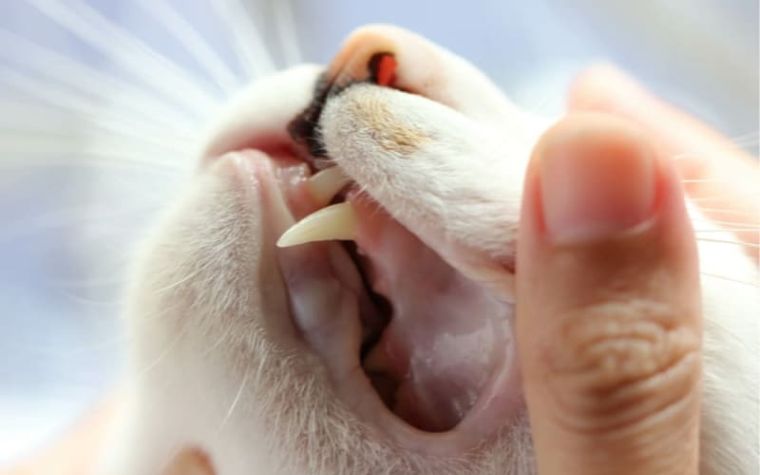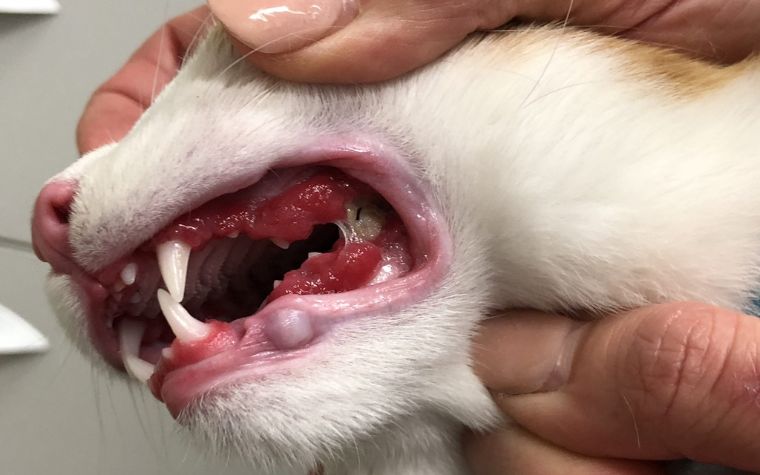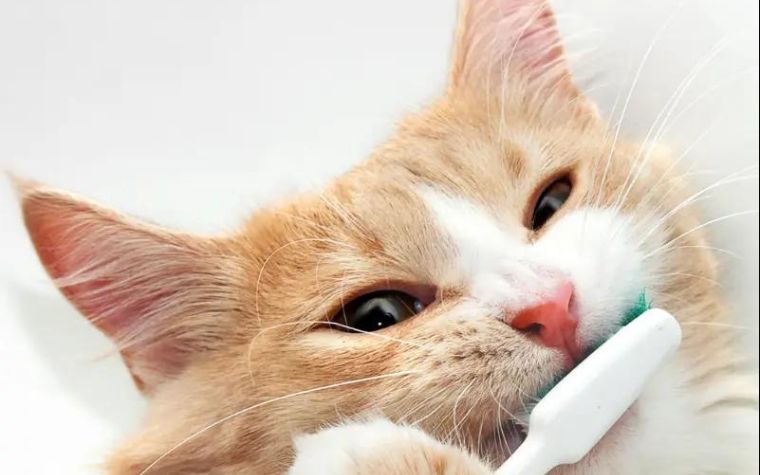Table of Contents
Even if a pet owner takes care of their cat’s health, some cats will experience dental issues in their lifetime. In cats, dental disease is a very common issue, and it is very hard to detect by their owners.
This disease is very painful and causes other health issues in cats. As cats cannot take care of their teeth, it’s the responsibility of the cat owner to brush the cat’s teeth regularly to protect them from dental disease.
Generally, dental problems in cats develop at the age of 3 years, and it affects their overall health. Because cats use their mouths for grooming, eating, hunting, etc.
If their teeth are damaged, then they will not be able to eat properly, so this will affect their health and digestive system.
Dental disease in cats occurs due to the bacterium that has developed around the teeth in the mouth. Common dental problems are gingivitis, periodontal disease, and tooth resorption.
All these dental issues can be treated and prevented if you are diagnosed on time. In this blog, you will read about dental diseases in cats.
Also Read:- What are the Reasons for Drooling in Cats?
What are the Causes of Dental Disease in Cats?

Dental disease in cats is caused when there is inflammation of the teeth and gums due to plaque and tartar accumulation.
Plaque is a mixture of food particles, saliva, and bacteria, and it sticks to the surface of the cat’s teeth. If the cat’s owners do not remove this by regularly brushing the cat’s teeth, then it will develop into tartar.
It develops above and below the gum line and damages the supporting tissue of the teeth and bone. This leads to bad breath, oral pain, and tooth loss.
Dental diseases must be cured on time, otherwise, they result in severe other health issues like heart, liver, and kidney issues. To prevent dental disease in cats, pet owners must schedule a visit to the vet for the cat’s dental health.
What Are the Signs That Show a Cat Has Dental Problems?

Cats, in general, do not exhibit any symptoms that would allow their owners to determine that their kitty is suffering from dental problems. Below are some of the signs that can help you identify your cat’s dental disease.
- If you notice your cat has brown and yellow teeth in their mouth,
- If your cat is losing weight,
- You notice red, bleeding, and swollen gums in your cat’s mouth.
- If your cat doesn’t like it when somebody touches their mouth,
- Change in their behavior
- There is bad breath in your cat’s mouth.
- If they are finding difficulty chewing food or if they are eating slowly,
- Your cat drools excessively.
- If you notice your cat’s teeth are missing,
- If your cat vomits after eating food,
If the cat owner notices any of the above signs in their cat, then immediately visit the vet for your cat’s dental treatment.
What Are the Common Dental Diseases in Cats?

1. Plaque and tartar in cats:
Plaque is the complex layer of bacteria which develops on the surface of the cat’s teeth. Normally, it is not easily visible because it is the thick white layer on the tooth surface.
It is the underlying cause of dental disease. Plaque can be removed by brushing the cat’s teeth regularly in order to keep the gums healthy.
If it continues to grow thicker and not be removed over time, then the plaque becomes hardened, and this is called “tartar or calculus.”
At this stage, a yellow and brown coating develops on the tooth surface. It cannot be removed just by brushing the teeth; you have to take the cat to the vet for treatment.
2. Gingivitis Disease
Gingivitis is a dental disease in which the gums around the teeth become red and swollen. This disease is harrowing due to the plaque and tartar accumulation on the cat’s teeth. The 3 stages of gingivitis are mild, moderate, and severe.
Other infectious diseases that cause gingivitis include feline immunodeficiency virus, feline leukemia virus, diabetes, kidney disease, and autoimmune disorders. If you want to cure this disease in cats, you should take your cat to the vet immediately.
3. Periodontal Disease:
When gingivitis disease is not controlled in cats, it results in periodontal disease. In this way, it affects the supporting tissues that attach the tooth to the gums and bone and weakens them. As a result, there is inflammation in the periodontal tissue that surrounds the tooth.
This destruction of the tissues can lead to tooth loss and tooth decay. Periodontal disease occurs when gingivitis disease is not treated properly. To prevent this disease, you have to go to the vet for proper cleaning of your cat’s teeth.
4. Tooth Resorption
Tooth resorption in cats occurs in middle-aged and older cats. It is quite a common condition in cats when the cat’s teeth begin to break down from the inside out.
This issue occurs if the protective dentin layer that is present around the tooth gets broken down. You can diagnose this situation if your cat avoids eating hard food or if they are swallowing food without chewing it. This problem can be cured by removing the damaged teeth or by professional dental cleaning of the cat’s teeth.
Also Read:- 5 Nutritious Homemade Cat Food Recipes
How to Prevent Dental Disease in Cats?

- To prevent dental disease in cats, you must brush your cat’s teeth regularly so that the plaque does not stick to the cat’s tooth surface. And also make sure you use pet-specific toothpaste for brushing their teeth.
- You should regularly check your pet’s gums. It should look pink and healthy, instead of red and swollen.
- You should give food to your cat according to the vet’s prescription. Balanced dental diets help to prevent tartar and other dental diseases. Also, make sure your pet eats slowly.
- For proper dental care, you should schedule a regular visit to the vet.
Conclusion
Proper dental care can prevent all dental diseases in cats. To prevent infections, you should regularly brush your cat’s teeth and check that their gums are not red or swollen.
Most importantly, schedule a regular appointment with your vet for your cat’s dental care. freeslots dinogame telegram营销
